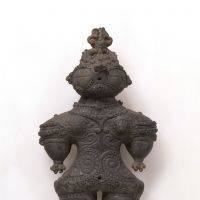Archaeologists and other experts agree that dogū , ancient Japanese clay figurines were produced during the Jomon Period (c. 10,000 B.C. to 400 B.C.). However, the purpose of dogū remain a mystery. Many believe that they were likely ceremonially displayed at local festivals or used as talismans to ward off bad luck.
This exhibition showcases 220 dogū unearthed from areas spanning the nation — from Hokkaido to Okinawa. Though they remain an enigma, the unusual statuettes, most of which appear to be female with small waists and large eyes, offer clues to aspects of Jomon culture; till Dec. 9.
Miho Museum; (0748) 82-3411; 300 Momodani, Tashiro, Shigaraki-cho, Koka, Shiga; Ishiyama Station, JR Biwako Line. 10 a.m.-5 p.m. ¥1,000. Closed Mon. www.miho.or.jp.



















With your current subscription plan you can comment on stories. However, before writing your first comment, please create a display name in the Profile section of your subscriber account page.